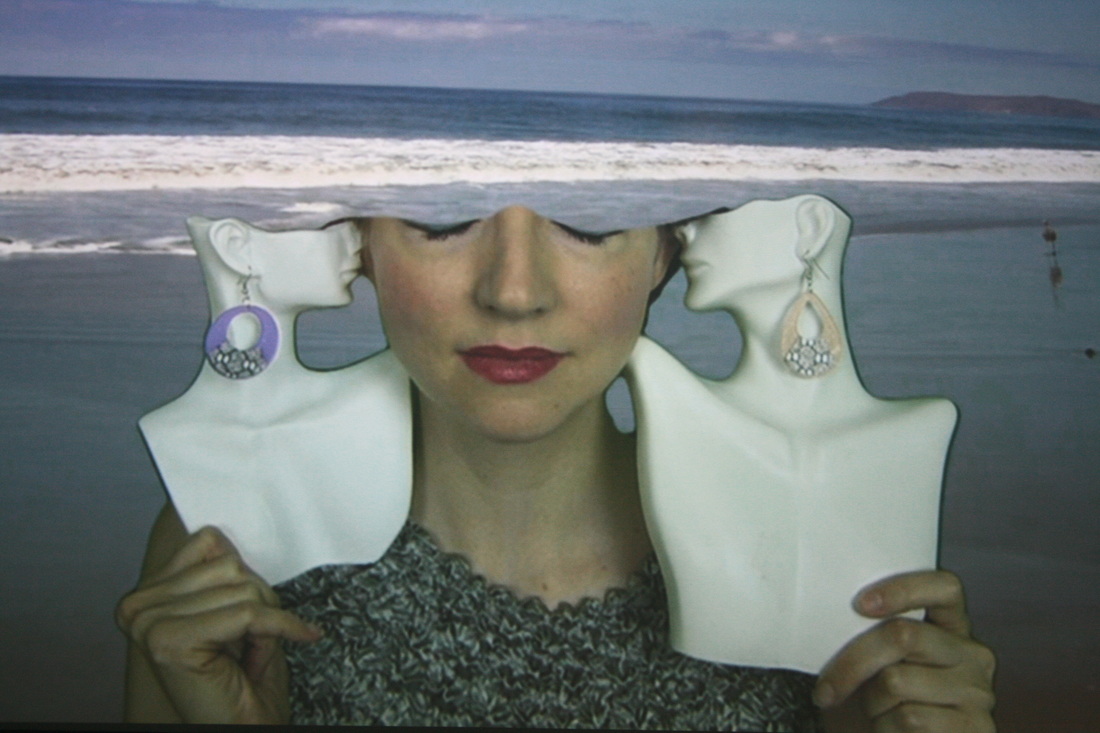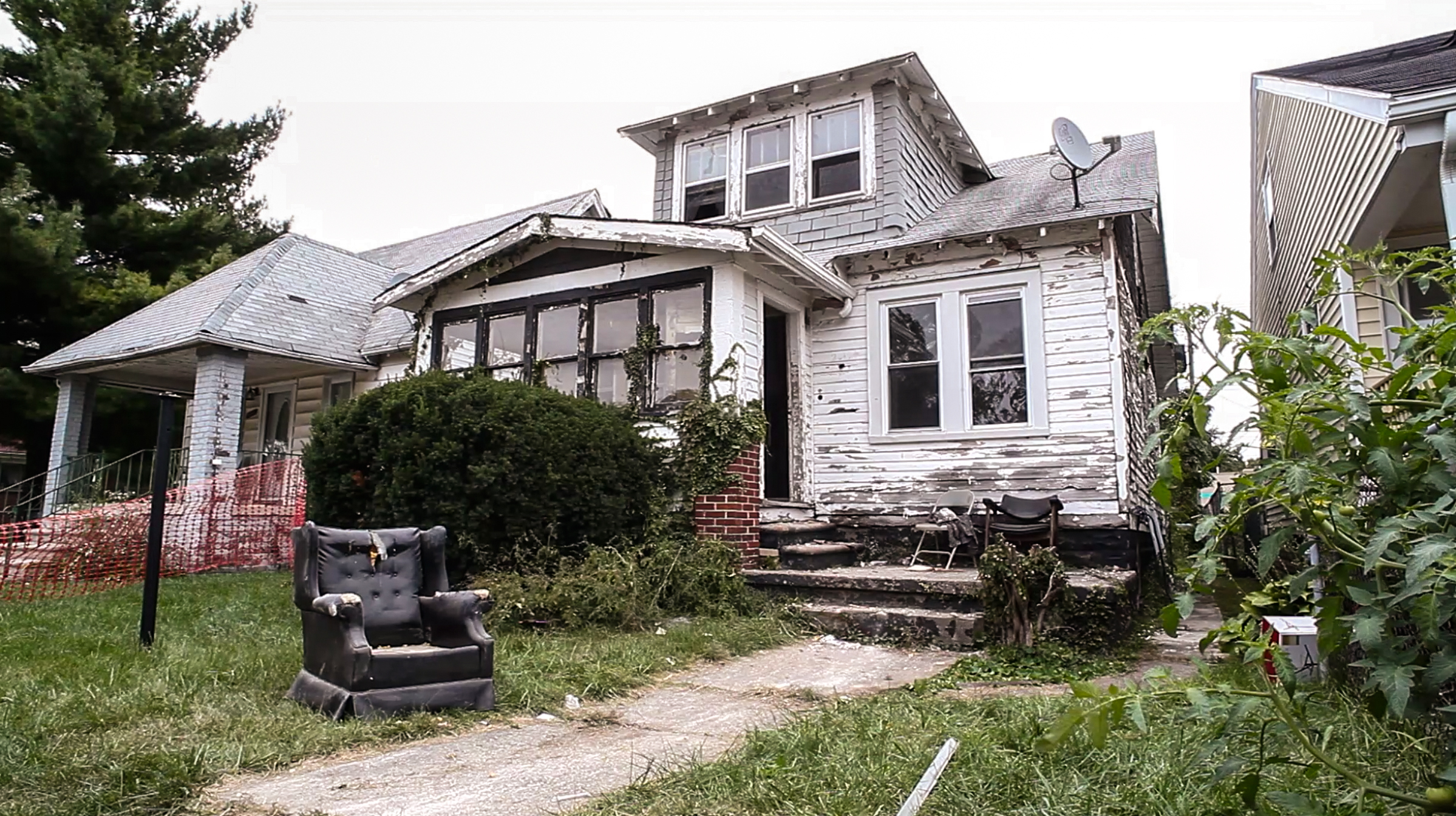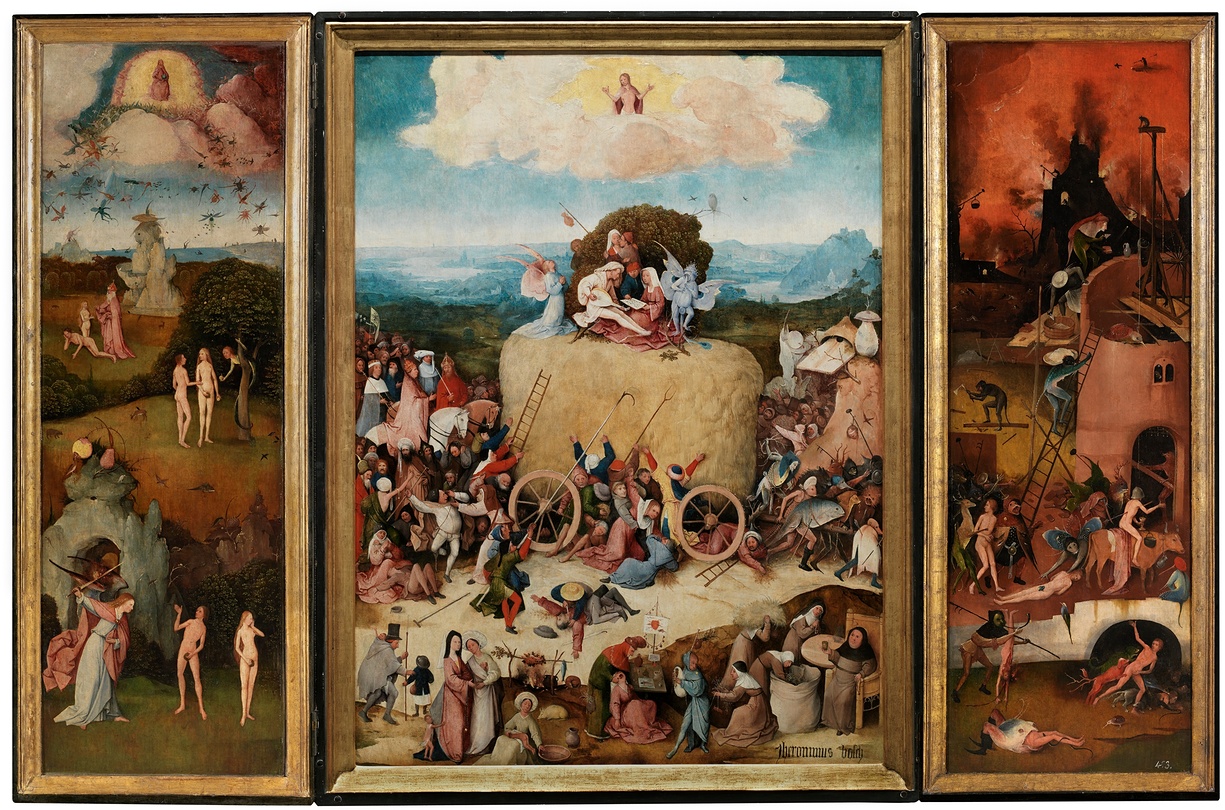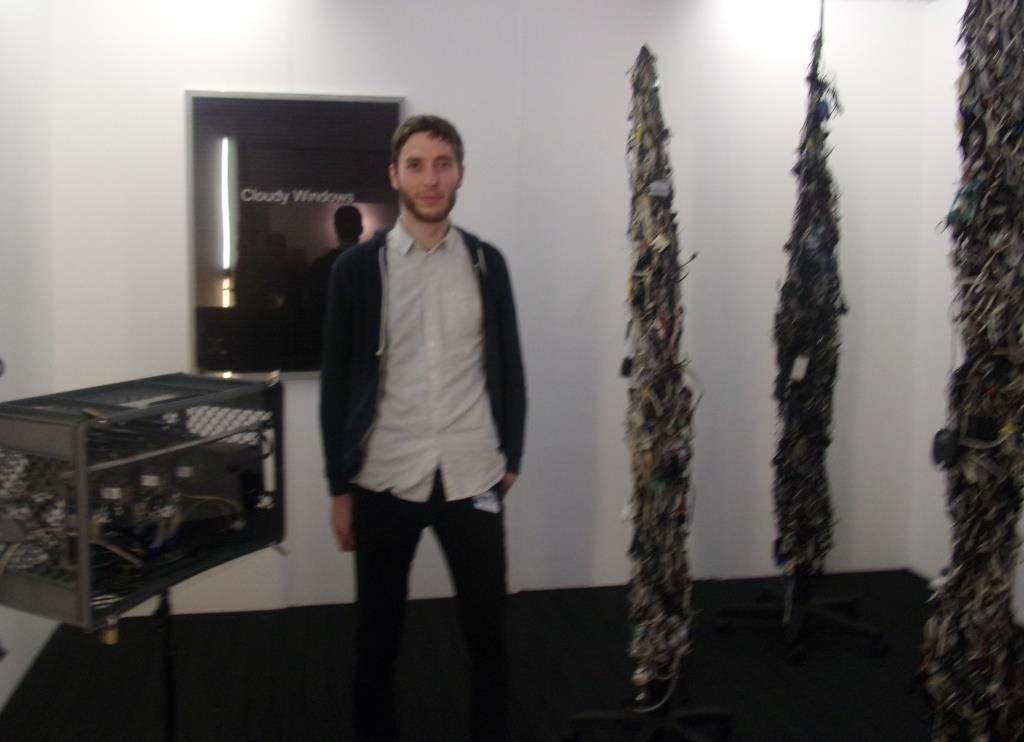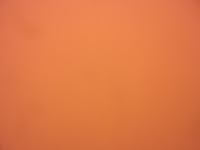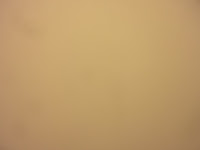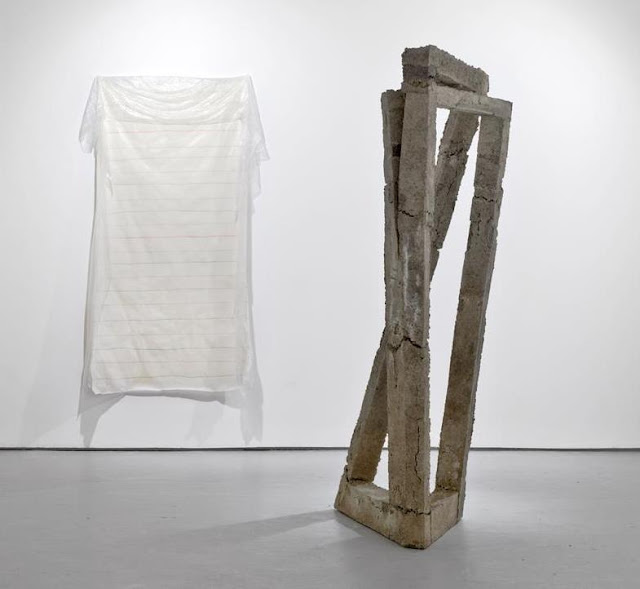Clem Crosby: My, my shivers / Rachel Goodyear: Fragments / Alina Szapocznikow: Sculpture - Lampe VIII @ Pippy Houldsworth Gallery, 6 Heddon St - Central
To 15 Jan: www.houldsworth.co.uk
 |
| Rachel Goodyear: Facing the Wall, 2015 |
Pippy Houldsworth has three shows by
artists I have previously recommended…The single work presentation in ’The Box’
is a classic from 1970: Alina Szapocznikow’s mouth-breast-neck of a lamp merger
lit from within to sensually mournful effect. The Viewing Room
shows Rachel Goodyear moving her witty graphic style in a more chance-driven
and painterly direction. And the main space yields 11 new paintings and
oilstick works by Clem Crosby, their marks shivering across aluminium, formica
and balsa board as he continues his cheerfully nervous exploration of the
effects of different grounds. As I suspected, it’s all good.
 |
| Clem Crosby:Untitled, 2015 - oil stick on balsa board - 34 x 50cm |
_________________________
Cipriano Martinez & Christine Van Der Hurd: Woven Cities @ Maddox Fine Arts, 52 Brook’s Mews - Mayfair
To19 Jan: www.maddoxarts.com
 |
| Composition in Black & Magenta |
This unusual show focuses on nine large rugs hand woven in India by
Christine Van Der Hurd's team after paintings by the Venezuelan
Cipriano Martinez. His work occupies a richly ambiguous space between
cityscape and abstraction, architecture and networks, order and its
deconstruction. That proves a good basis for handsome silk dhurries in
what proves a genuine collaboration: the sizes, proportions and colours
of the paintings are changed to suit weaving, and two were made by
Martinez knowing they would be woven. Five representative examples of
Martinez's paintings allow comparisons to be made.
 |
| Cipriano Martinez and Christine Van Der Hurd |
_________________________
Robert Indiana: Don't Lose Hope @ Contini Gallery, 105 Bond Street - Central
To 2 Jan: www.continiartuk.com
 |
| HOPE Wall (Red/White/Blue), 2010, Silkscreen on paper |
I suspect neither the Contini Gallery nor Robert Indiana are quite cool in art world terms, but this match-up turns out well as a chance to judge the pop-text pioneer’s significance as a deflator of consumer society staples. Born Robert Clark in 1928 and rebranding to his home state in xxx, Indiana is best known for his many graphic and sculptural encouragements to ‘LOVE’, in which the ‘O’ in a pinball-machine-come-advert seems to have been kicked askew by the ‘L’. This substantial retrospective starts with early figurative works from 1946; jumps to 60’s word works with little LOVE but plenty else, including a whole room filled with a rainbow alphabet; then concludes with a series initiated for Obama’s 2008 campaign, putting HOPE through its paces with some brio. I offer TOIL as the next word, though Indiana says he’s considering PRAY.
 |
Robert Indiana - ALPHABET (A to Z), 1994 - 2011, 26 Silkscreens and Rainbow Roll on Canvas
_________________________
|
Jonny Briggs: To Eat with the Eyes 11 Brookwood Road - Southfields
To 31 Dec: www.cabin-gallery.com/jonny-briggs-exhibition-november-2015 (links to my essay on the show)
It’s
worth a trip towards Wimbledon to catch the psychologically provocative
and technically innovative photography of Jonny Briggs. He’s known for
attempting a seemingly impossible act of self-escape: in his words: ‘I
try to think outsidej the reality I was socialised into and create new
ones with my parents’. Here he goes back further by altering historic
black and white photographs of his grandparents and great grandparents.
Briggs reconfigures their gazes by splicing them into an unsettlingly
monocularity, or by pinning lips onto their eyes as if they might
literally eat with them. His mother is here, too – though you have to
look hard to spot her mouth smuggled into a woodland landscape.
 |
Peephole, 2015
_________________________ |
Rosalind Nashashibi: ELECTRICAL GAZA @ Imperial War Museum - Kennington (where the Lee Miller show is also well worth seeing...)
Odd how three subtly political female film makers with
Palestinian backgrounds are suddenly prominent: Emily Jacir at the Whitechapel
and Jumana Manna at the Chisenhale have garnered most of the attention, but I like
Rosalind Nashashibi’s ‘Electrical Gaza’ at the Imperial War Museum: 20 minutes
depicting what the English born Irish-Palestinian artist calls the ‘wired stasis’
of the Strip. It opens and closing with crowding at the border gate. A
contrast emerges between the man’s world of the enclosed city and the open run
of the sea in which horses and children bathe as Nashashibi finds
enchantment as well as the ominous undercurrents. They're pointed up
by the contrasts in the soundtrack’s music and by the occasional device of an
animated version of what’s on camera taking over to hint at hidden realities.
_________________________
Ann
Veronica Janssens:
yellowbluepink @ the Wellcome Collection, 183 Euston Rd – Euston
Not only
is this the first time Brussels-based Ann Veronica Janssens has shown one of
her mist environments in London, it’s also the most effective one I’ve been in.
Yellowbluepink reveals a chromatic range wider than its title as you
move through, and is dense enough to induce the right level of trippy
confusion. Disembodied by colour as entity, you may be in need of the tip ‘exit
towards pink’. There’s more here, then, than the fairground fun of
bumping into the other 19 people allowed in, though the Wellcome may be
stretching it by making Janssens the keynote artist for its forthcoming
programme States of Mind, which will ‘trace the edges of consciousness’.
_________________________
Julian Simmons: Now @ Lychee One, 38-50 Pritchards Road – Cambridge Heath
Julian Simmons is best known for the films and photographs he has produced with - and of the work of - his partner, Sarah Lucas. Here he asserts himself through eleven intensely detailed meditative graphite drawings of concentric circles (if that doesn’t sound terribly assertive, consider that the biggest has a diameter of ten feet). Their resounding lineations conjure enlightenment, itinerant shadows and – given that they resemble eyes and breasts by duck-rabbit turns – a little bawdy comedy. The tone carries through into a handsome book, in which Simmons’ musings resonate with his milking of the mystical and he does a remarkable job of photographing pancake-flat drawings to make them look three dimensionally and celestially spatial.
 |
| MILKY9 |
_________________________
John Armstrong: Paintings 1938–1958: An Enchanted Distance @
Piano Nobile,
129 Portland Road - Holland
Park
 |
| Madonna, 1945 |
If you know John Armstrong (1893-1973),
it’s probably as an associate of Paul Nash who made disquietingly quiet paintings of ruined buildings in World War II.
He was, though, both a glamorous society figure in the 1930's and a consistently innovative artist, particularly
in tempera (from which he switched to oil for no known reason in 1950). The
streams of work here include timeless character types, seen singly (The Goddess,
1938) or in mysterious groups (The Battle of Nothing, 1949); his own take on
divisionism (Madonna, 1945, is a masterpiece which collides that late
nineteenth century movement with Roman mosaics and a medieval subject and makes
effective use of swirling cloaks and a menacing sea); surreally-tinged
anthropomorphisms of leaves and feathers; and symbolically fecund arrangements of thorns and seeds. And he was born in my home
town, Hastings…
 |
| The Iceberg, 1946 |
|
_________________________
Christina Iglesias: Phreatic Zones / Jeff Wall @ Marian Goodman Gallery to 18 Dec / Chantal Akerman: Now @ Ambika P3 - Baker Street to 6 Dec
http://mariangoodman.com
 |
| Christina Iglesias: Installation view with Phreatic Zone II,
aluminium and water ('phreatic': relating to or denoting underground
water in the zone of saturation - beneath the water table). |
Suddenly
Marian Goodman is behind three of the best shows in London: what has
become a memorial retrospective of Chantal Akerman’s gallery film
installations at Ambika, Jeff Wall’s new photographs, and stunningly
installed works with water by Christina Iglesias. The main gallery floor
Is raised to the level of the pavement outside to cover the workings of
the underground flows through root-heavy aluminium sculptures, Given
the space's classical columns, Phreatic Zone creates the air of a Roman
plaza to the varying sound of water over a timed sequence. The water
is visible through paralellograms cut in the floor to trigger a
perspectival and ditrectional effect which points, says Iglesias, to the
related public space of Golden Square nearby. Metaphors abound: the
hidden - including an allusion to London's Underground rivers - history,
memory, origins.
 |
| Chantal Akerman: still from the multi-screen installation The East: Bordering on Fiction, 1995 |
_________________________
Harm van den Dorpel: IOU @ Narrative Projects, 110 New Cavendish Street
- Fitzrovia
To 19 Dec: www.narrativeprojects.com/
 |
| Painting from IOU under flash |
There’s something of a modern tradition of painting
with fire, from Yves Klein to such as Bernard Aubertin, Aaron Young and Laura Santamaria. Dutch artist Harm van den Dorpel
applies a neat tweak by using a heat gun as his brush, having covered his
canvas with the paper commonly found in cash tills - which create their
receipts through temperature rather than ink. Van den Dorpel sprays water and then applies guns
to form ghostly abstractions, made more distinctive by the rucks and folds
which the process causes. It all fits with discussions of art's value, merging proof of purchase with the content that threatens to trump. For the opening, van den Dorpel presented
the paintings by candlelight, though I guess he should rather have warmed the room with heat guns.
 |
| Installation view by candlelight |
_________________________
Out of Chaos - Ben Uri: 100 Years in London @ Inigo Rooms, Somerset House East Wing - The Strand
|
 |
Arthur Segal: Halen, La Ciotat (Harbour Scene), 1929 - oil |
The
Ben Uri Gallery has had a dozen homes over a hundred years, and
built a significant collection of art by Jewish emigres. It’s now hoping
to
find a new home under the banner of art, identity and migration, and to
expand
its ethnic reach to represent London as a home for multiple ethnic
communities. This show, featuring 70 of
the collection’s inventory of 1300, illustrates what that might look
like for the
Jewish century. It’s not a parade of masterpieces, though there are a
couple,
but it is full of fascinating work, much of it by little-known figures,
and it
is exceptionally well presented via text and free audio commentaries.
Bomberg,
Gertler and Auerbach show well, and I rather liked the sort-of cubist
pointillism of Romainian-born Arthur Segal's harbour scene.
 |
| David Bomberg: Racehorses, 1913 - Black chalk and wash on on paper |
|
Sarah Woodfine: We can hardly imagine
how much the angels love the truly chaste
@ Danielle Arnaud, 123 Kennington Road - Kennington
To 13 Dec: www.daniellearnaud.com
 |
| Untitled (Branch) II 2015 pencil on roll of Saunders Waterford paper, steel and perspex
72 x 24 x 24 cm |
Sarah Woodfine
makes two unusual combinations: first, obsessively controlled drawing with
sculptural forms; second, a poised and somewhat meditative aesthetic with such psychodramatic
subjects as witchcraft, repression and the uncanny. Here that all comes together through drawings
which curl their way around outside or inside of the rolls of paper weighted to retain the shape. That formal
suggestion of serpents - and the infinite motif of the Ouroboros eating its own
tail - is echoed in the pencil
exactitudes of a rope which turns into a snake, and of thorny branches which
are similarly transformed by implication. Atmospheric lighting completes a show
which may well be less like any other than any other in London now.
 |
| Dark night, 2015 - pencil on paper, 15 x 52 cm (290 cm uncurled) |
_________________________
Gerard Williams: Cultural Currency @ Handel Street Projects, 14 Florence Street - Islington
On
the back of thirty years’ work emphasising our personal and social
preconceptions, Gerard Williams shows thirty double-sided birch plywood
tablets. Small windows are cut from each face to highlight details of
two or three banknotes enclosed within. This economical collision of art
and value might ask whether, as Dave Hickey has put it, art and money
are parallel cultural fictions - based on demonstrations of trust -
which have no intrinsic value. If that’s the question, one answer might
lie in the aesthetic interest which accrues from revealing evocative
image fragments while turning the tableaux into compelling abstract
arrangements.

_________________________
James Hopkins: The Mirror’s Mirror @ Union Gallery,
It’s hard – says its curator, modestly * – not to commend this perfectly pitched quincunx
of sculptures by James Hopkins, each of which reconciles opposites or
sets up a paradox Thus a flame burns in water, stone mounts a ladder or
hovers in the air, black turns to white and the
word ‘mirror’ remains the word ‘mirror’, even though it’s reflected in
‘the mirror’s mirror’. That then, is the set of illusions – all with
intimations of what lies beyond appearances, from the nature of reality
to the shadow of death to the possibility of an afterlife. What’s more, ‘Out of the Living’ at Supplement Gallery, which is next door to Union, is also well worth seeing..
 |
| Scaled Ladder, 2014 |
Simon Callery: Flat Paintings @ FOLD,
158 New Cavendish St – Fitzrovia
 |
| Flat Painting Bodfari 15 Caput Mortum, 2015 - 237 x 178 x 26 cm |
Simon
Callery presents two types of paintings which – though categorisable as ‘flat’ –
build up considerable interior space. The fold in the FOLD gallery comes from
125 meters of canvas rucked up to make the 75kg of Wallspine (Leaf), 2015. The other three large works are stratigraphic
layerings built up at the archaeological sites which inspired them, their earthy
tones considerably weathered by the practical necessity of being left out during
the months of their formation on Welsh hill forts. The holes let into their inner
voids are derived from the locations and shapes of artefacts found, but make, along
with cutting and re-stitching, for a convincing exposure of process and excavation
of painting.
 |
Flat Painting Bodfari 15 Caput Mortum in progress on site
_________________________
|
 |
| Tell Shimshara, 2002 Mixed media on cast aluminum - 137 x 152 x 58 cm |
Sticking
with the archaeological inspiration, this zappy Frank Stella
retrospective includes to wall mounted scultures named after key sites in ancient Anatolia: Stella threw found
elements into a sandpit, poured in aluminium and stirred to taste.
They're from an early 80s series mounted on rings which,
unusually, allow them to be rotated so that they can be
displayed stably at any angle. That aside, Bernard Jacobson makes the
most of his capacious new space to show the 4.26m square Michael Kohlhass Panel #7
and the linked sequence of seven canvasses Die Marquise von O... which is - at
over 13m wide - easily the biggest artwork within 200 metres (ie until you get
to Ai Wei Wei at the Royal Academy).
 |
| Die Marquise von O..., 1999,
mixed media on seven canvas panels, overall 305 x 1,317 cms |
_________________________
 |
| Dan Hays: Wanderlust, 2015 - oil on canvas, 152 x 270 cm |
For a more recent take on divisionism, see the latest from Dan
Hays, who continues to take inspiration from online images of Colorado – which he’s
never visited but has built into a standing fantasy after discovering the
website of a namesake there in 1989. Wanderlust , one of the biggest
paintings in that series, encodes the message ‘sweet home’ in its dazzlingly intricate
version of pixilation, and reflects - presumably in the monitor - his own
window. What home is longed for here: nature, dwelling or screen? The other
big work here turns a malfunctioning WebCam image into the matrix of a woven
canvas. When Karen David asked Hays what
he’d choose if granted a superpower (www.corklinedrooms.com) he joked
that didn’t need another one - though maybe he's content with his phenomenal patience.
 |
| Dan Hays: Wanderlust, 2015 (detail) |
_________________________
The three potential meeting spaces of Prem Sahib's extensive and well-received ICA show each create clinical and yet intense atmospheres, and there is in effect a fourth at his gallery a kilometre north: Southard Reid is boarded up as if to suggest an unofficial occupation. A fading neon, the eponymous END UP, flickers between a closing down or having reached a goal. Inside, you're in changing rooms, complete with benches, gay scene magazines and new objects through which Sahib can apply his brand of sensual minimalism: several silicone rubber rolls of paper towels.
_________________________
Eric Bainbridge / Joel Kyack @ Workplace London, Mezzanine Floor, 61-65 Conduit Street - Central
 |
Joel Kyack: The Very First Day, 2015 Bucket, pump, plastic finger, dye, water, tile and wood
129 x 41 x 41 cm |
Chiming with that Stella, LA artist Joel Kyack has a penchant for setting localised world records, mocking the Guinness Book (which, come to that, he claims to have thrown further than anyone, albeit without official recognition). Gateshead's Workplace as a supra-local outpost in London, currently showing Kyack's sculptures - such as an endlessly spiralling balloon and a putple-watered start of the world Fountain which conjoins creation and urination - together with 10 new examples of Eric Bainbridge's rather staisfying paintings using his signature material of synthetic fur fabric. He told me that this stream of production - less known than his fur sculptures - rather annoys painters, which makes them all the more fun to make.
 |
| Eric Bainbridge: Untitled, 2015 Fur fabric and acrylic - 140 x 140 cm |
_________________________
Last Year's Snow: The Hungarian Neo-Avant-Garde In The 1970s & 80s @ Austin Desmond Fine Art,
 |
| Katalin Ladik: Poemim, 1978 |
Austin / Desmond have put plenty of research and search into presenting a first London overview of the unofficial Hungarian production of the Communist era. The emphasis is on performance and its photographic documentation, much of it with a subversive political edge. Dóra Maurer is probably best-known of the ten artists here, though the ‘radios’ of Tamás Szentjóby (which are just bricks, as carried in protest at the banning of radios as part of the 1968 suppression) have been shown at Documenta. Poet and performer Katalin Ladik’s charisma does transmit through the photo sequences in which she re-presents her self. I also liked Endre Tót’s self-negating expressions of pleasure at his freedoms.
 |
Endre Tót: I am glad if I can type Zer000… 1975 - Typewriting, ink
and rubberstamp on paper
|
_________________________
Eric Bulatov: BOT @ de Pury de Pury, 3 Grafton St – Central
This 34 work retrospective of the Paris-based Russian Eric Bulatov shows his considerable range to advantage, from the iconic billboard-sized text paintings to conceptual abstraction to atmospheric landscapes to re-envisioning older works, as when he resolves what he judges to be weaknesses in a classic Alexander Ivanov painting by adding spectators in the foreground. It also benefits from excellent explanations from Bulatov himself. It helps to know, for example, that ‘Da’ – ‘Net’ (Yes – No) is built into the spatial perspectives, contradictions and ironies of ‘Entrance – No Entrance’ in which the words VKHODA NET ‘plastically demonstrate the reality of the space while declaring it non-existent’.
 |
| Le Tableau et les Spectateurs, 2011 — 2013 |
_________________________
Judy Chicago: Star Cunts & Other Attractions @ Riflemaker, 79 Beak St - Soho
To 31 Oct: www.riflemaker.org
 |
| Star Cunts #2, 1969 |
This
economical yet broad survey of the key years in Judy Chicago’s
development sees her emerge as a ballsy counter to the ab ex norm in
early sixties LA (with studies for the car hood paintings, now on
show at Tate Modern) then slip into less combative abstraction before
finding her mojo by applying the colour lessons learned
to a series named for how male painters bonded through matey insults.
‘Well, I’m a cunt’, I take Chicago to be saying in these subtly orificial
images, ‘but I’m going to be a star’. She then took on another
taboo – narrative – and taught herself china painting (shown in a
butterfly plate sequence from 1973-74), and fused attitude and technique to
famous effect in the 39 place settings of The Dinner Party, 1974-79,
represented here by test plates and some of the 'goddess' sculptural
elements.
 |
| Goddess #6, 1977 |
_________________________
Neil Gall: Arrange your face @ DomoBaal, 3 John St – Holborn
 |
| Nightwatch, 2013 - oil on gesso panel, 52 x 36 cm |
It’s
ten years since Aberdonian Neil Gall showed solo in London: he’s still
painting from photographs of the models which he constructs of studio
bric-a-brac, but his sources have become less sculptural. The faces in
these models, which cohere into caricatural types through a nice mix of
strategy and accident, invade the viewer’s space with a
flattened-up-close intensity. That’s enhanced by Gall's uneven,
paint-like use of varnish, which glistens sensually. The title ‘Arrange
your face’ picks up on the Arcimboldoesque
aspect, but is also a phrase common in Wolf Hall: that fits
particularly well with the contrasting pair of ‘Nightwatch’ and
‘Cut-Out’, as the latter is an empty version of the former’s headspace,
bringing to mind the iconoclastic smashing of the Reformation.
 |
| Cut-out - oil on gesso panel67 x 51cm |
_____________________
Mustafa Hulusi:
Flyposting @ London Metropolitan University, 59 Whitechapel High St
 |
| Olive trees on the street |
This unusual show brings the history of London-based Turkish
Cypriot Mustafa Hulusi’s flyposting practice to the gallery context, starting
with late 90’s declamations of his palpably alien and then unknown name,
merging it with disco effects to confuse more categories than just the fine art
/ graffiti / design divides. 2005 saw the debut of what became his graphic
signature, the ‘expander’ which suggests heightened states of consciousness, be
they aesthetic – as when paired with flowers – or otherwise. They were popular
enough to stay on London’s sites well beyond their planned couple of weeks.
More recently the sensual excesses of giant pomegranates and the Levantine image-as-ground
of gnarled olive trees have taken centre stage. As well as posters on the
wall, we get a documentary slide show and a broadsheet of further images.
 |
| Pomegranate in the gallery |
Moyra Davey: You’re a nice guy to let me hold you like this @ Greengrassi,1a Kempsford Road- Kennington
 |
Dr. Y., Dr. Y., 2014 - 15 digital C-prints, tape, labels, postage, ink Each: 12 x 18 inches overall: 60 x 54 inches Photo: Marcus Leith. Courtesy of greengrassi, London
|
New York based Canadian Moyra Davey seamlessly melds tone and structure in her films and collages of
photographs which have been through the postal system: the tone relaxed,
casual, intimate, yet literary; the structure apparently rambling and accidental
yet arriving somewhere nonetheless. Here the film sees her take off from
Derek Jarman's last film Blue to pitch blindess, Borges, process, Anne Sexton,
curtains, Julia Kristeva and PJ Harvey into an evocatively meditative half
hour. The postings use the functional chance abstraction of parcel tape, folding and
stamps in making public traffic from the personal: coffee stops, the weather,
old receipts, the thought that her dog defecating echoes herself giving birth in
both pose and the urge to expel...
 |
| Still from Notes on Blue, 2015 |
Ugo Rondinone: clouds + mountains + waterfalls @ Sadie Coles, 62 Kingly St - Central
To 24 Oct: www.sadiecoles.com
 |
| orange yellow green blue pink red mountain, 2015 |
Ugo Rondinone isn't
one to do things by halves, and this elemental air-water-stone /
natural-romantic-existential show is no exception. Against the backdrop of a
dozen ethereal cloud paintings which shape meditative skies into upper borders
of cumulus, the New York-based Swiss artist places 33 ‘mountains’ made of 3-6
rocks stacked vertically on concrete plinths, essentially abstract and yet
sometimes suggesting figures as well as landscape. They're painted in supernaturally
intense Day-Glo colours, so that the whole ensemble has London galleries'
biggest current wow factor. The waterfalls stand apart from this: spindly
aluminium cascades which look more like Indian rope tricks.
_________________________
Ralph Fleck @ Purdy Hicks, 65 Hopton Street - Bankside
 |
| Londonbild 7. VII, 2015 - oil on canvas, 200 x 200cm |
Unusually, Purdy Hicks give both floors over fully to one artist
– but then it is their best painter, Freiburg-based Ralph Fleck, known for his ability
to combine a seething abstract intensity close-to with figurative coherence
when you step back. There’s something of a logical upper and lower split to his
range of subjects here. Upstairs are aerial cityscapes and mountains disappearing
into particularly energetic mist; downstairs it’s dying flowers, books and the
city reduced to post-quake rubble. Add a
colour-chart-like canvas, which could be
buildings or books viewed from above, and these 25 paintings cover an
impressive range.
 |
Bild
3/VII Beben, 2015 - Oil on
canvas, 200 x 200cm
|
Dominic Beattie: Studio @ FOLD, 158 New Cavendish St - Fitzrovia
 |
| Dominic Beattie in 'Studio Chair' with Untitled, 2015 |
Dominic
Beattie's 2014 show in Fold's old space - like all his practice in the
last three years - saw him knock up small scale, cheerfully abstract
constructions with a DIY aesthetic (see the following choice). Given the
run of a more expansive new space, he’s gone bigger and more complex,
with four collages up to 10 feet wide which layer spray paint, ink,
aluminium tape, paper and varnish, the dominant element being the jazzy
use of tape to make fractured geometries with echoes of TV static, sound
waves and op art. Beattie thoughtfully provides four chairs in what
might have been sculpture’s space as monochrome resting points which
encourage longer engagement with the paintings: they're built to his own
design, hand coloured and finished with a rather cool 'Dead Flat'
varnish.
 |
| Untitled, 2015 |
___________________
Invited @ Fair & Co, 9 Hillgate Street - Notting Hill Gate
Alexi Williams: Untitled (Garden of Transgression), 2015 - plaster / aluminium on dolly,
‘Invited’
is a pop-up in a just-renovated and surprisingly extensive Notting Hill
house in which many separate spaces are turned over to a mixture of
contemporary art and medieval carvings as the property is marketed. I
was almost bound to like it, as Flora Fairbairn and Philly Adams’
curation could have been derived from Paul’s Art World: I’ve written on
recent shows by Jodie Carey, Alastair Mackie, Liane Lang, Alejandro
Ospina, Jodie Carey, Rafael Gómezbarros, Boo Saville, Dominic Beattie,
Phoebe Unwin and Tim Ellis… and they all have good work here! And yet I
was most struck by the new to me Alexi Williams, who has three rather
baroque plaster sculptures on dollies: they look a little as if Rebecca
Warren has turned to working with a cake decorating gun, but were made
by filling and casting the somewhat floral complexities of cows’
stomachs.
 |
| Dominic Beattie: Untitled, 2014 - ink, spray paint, enamel and varnish on board, 47 x 30 cm |
___________________
Oleg Tolstoy: Who’s Driving You @ Carousel, 71 Blandford Street – Marylebone
Oleg
Tolstoy is a commercial portrait photographer who also takes on art
projects. A room above the Carousel restaraunt holds his latest: after
careful consideration of Philip Lorca-diCorcia 2006 legal victory, which
held that he could take street photographs without his subjects’
consent, Tolstoy set out to catch not taxis but night images of their
drivers at a central London junction. Ten such images selected from
thousands are shown here alongside semi-abstract shots of traffic and a
six minute film shot from cars, which turns passing headlights into
kinetic patterning. The battle of black cab vs. Uber driver underlies
this atmospheric documentation of what still proves to be an
overwhelmingly male world - and none of them look too happy.

___________________
Gelitin: Prospopoei @ Massimo de Carlo, South Audley St - Mayfair
 |
|
| Installation view with Golems nearest to camera |
In 'Prospopoei' * the cheerfully
anarchic and obscene Austrian collective Gelitin escape the bourgeois value of
consistency through a hugely varied display on the ground floor, from a stained
vases and toilet to wildly busy drawings and flowers in their signature
material of plasticine. A table of blobby white glazed ceramic 'Golems' is
self-effacing in this cacophony, but the perspective shifts when you go
downstairs to see that - upping the ante on the male genius painting with his
penis - the film shows the four men of Gelitin literally fucking the clay into the
forms we’ve just seen.
 |
| Still from the making-of documentary 'I Love My Job' |
* Prospopoeia: 'a
figure of speech in which an imagined or absent person or thing is represented
as speaking'. The press release uses two more attractive words you might need to check; rocambolesque: 'fantastic,
incredible, fabulous' and fardel:
'small bundle'
_________________________
Michael Bauer: butter Bebop (Transatlantic Crème Dreams) @ Alison Jacques Gallery, 16-18 Berners St - Fitzrovia
To 8 Oct: www.alisonjacquesgallery.com
|
|
|
|
|
 |
Butter Bebop, 2015 - Oil on canvas, 229 x 247 cm
|
Michael
Bauer’s colourful new paintings give the impression he’s enjoying
piling up their illogically coherent mash-ups of content and styles. On
primed canvases stained close to the colour of unprimed canvas, we find
about ten each of three categories. First, clearly figurative elements,
often set to ping off each other oddly: Butter Bebop, for
example, has hand, plinth, broccoli, baseball bats, clothes hanger and
book. Second, abstract marks, variously smeared and drawn. Third,
‘in-betweeners’ - either crisp abstract zones which looks as if they
could be objects – here a stripy tray, perhaps; or vague marks which may
or may not signify jelly, hedges, flowers, breasts and an iguana. If
these are portraits of minds, then my own would suggest they have it
about right.
Creme Dream 4, 2015 Oil on canvas, 184 x 153cm
|
____________________ |
Sinta Tantra: Fantastic / Chromatic @ Kristin
Hjellegjerde, 533 Old York Road, Wandsworth
 |
| Simple Races No. 2, (Le Corbusier), 2015 |
I guess we shouldn't be surprised that the colourful
Kristin Hjellegjerde, who is herself married to an architect, should show the Anglo-Balinese
Sinta Tantra. Her work brings a constructive aspect to the exploration of colour, is here inspired
by a book on colour* which was recommended to Tantra by her own architect partner.
But the key to this show is how the space is split into three colours zones
which successively bring us in from, separate us off from, and then lead us
back to the world. First pink vinyl plays with light through the window; second
abstraction’s all around against intensely coloured walls; then the found
colour of bird prints by Audubon enters to triple the Tantran (or should that
be ‘Tantric’?) chroma. .
 |
| Night view through the window |
* William Gass: On Being Blue: A Philosophical Enquiry, which is actually more like
prose poetry than philosophy: blue ‘is the colour consciousness becomes when
caressed; it is the dark inside of sentences, sentences which follow their own
turnings inward out of sight like the whorls of a shell’ etc…
_________________________
Yada Naidenov: Eye Scaffold @ Josh Lilley Gallery, 44-46 Riding
House St – Fitzrovia
To 8 Oct: www.joshlilleygallery.com
Young Mozambique-born London-based sculptor Yana
Naidenov has a nice way of melding permanence and impermanence with a little
duplicity thrown in. Her tottering
concrete geometries come across as playful variants on the Communist era monuments
now deteriorating in the former Yugoslavia - but are actually made from pulped
paper, so giving a different spin on the vulnerabilities involved. Taking the
role of insubstantial paintings are framing devices with more transparency than
pigment: there's reason as well as aesthetic in play, as their marker pen lines
are coaxed through the paper by Vaseline, and the outer breath-light covers
protect the undrying surface.
_____________________
Jess Fuller: Fairy Smoke @ Herald St., 2 Herald St - Bethnal Green
To 4 Oct: www.heraldst.com
 |
| Fairy Smoke, 2015 - acrylic and gesso on canvas, 385 x 254 cm |
There seems to be an endless supply of young American
painters ready to be introduced to London audiences, and Brooklyn-based Jess
Fuller is one of the most convincing. Matisse, Arp and Miro are channelled into
an exuberant language all her own as she combines multiple pieces of
canvas which have been variously shaped, folded, crumpled, dyed, put through
the washing machine etc. She moves them round on the floor until these hints of
'women's work' parody male painterly traditions in a lively dance of surface
detail and somewhat phallic biomorphism with titles which pick up wittily on possible associations.
 |
| Lettuce offering, 2015 - acrylic and gesso on canvas, 238 x 205 cm |
Lis
Fields: Red Kimono @
Conway Hall, 25 Red Lion Square - Holborn
To 30 Sept: www.conwayhall.org.uk/event/red-kimono/
 |
| Prasanth, 2015 |
Head to the Conway Hall Ethical Society – built in
1929 and housing a large humanist library - for an appropriate combination of
passion and restraint. Lis Fields’ photographs of an extended network of artists
and activists, all dressed in the same vintage kimono and made
up geisha-style (a
fairly committed process which typically
takes three hours). They pose in
solidarity with those affected by the radioactive fallout from 2011’s
Fukushima
nuclear disaster. In a neat play on serialism, people of different
races, ages
etc initially look similar, but individual characteristics soon burst
through.
Fields has backed up her concerns through extensive research and has
published a
booklet of testimonies, all pointing to a failure to acknowledge the
full -
and potentially worldwide - effects, or to hold anyone meaningfully to
account. All without Fields having been to Japan, making this all the
more impressive as
a lesson in empathy.
 |
| Lis Fields at Conway Hall |
___________________
Albert Irvin: Painting the Human Spirit @ Gimpel Fils, 30 Davies St – Bond Street
Bert Irvin died recently at 92, having worked exuberantly to the end on his passionately colourful abstractions. A selection of them make for a suitably upbeat summer show. Most are from his 80’s, when he settled into an attractive, if slightly predictable, language of smallish canvases full of noughts and crosses, quatrefoils and dashes. But he left a lot in his studio, some of it apparently too big to display at Gimpel Fils, large as their space is – and so the show is spiced by such as the more monumental close tones of 1960’s Moving Through; a stain-based Untitled (above) from a 1970’s series, shown alongside Irvin’s favourite sunflowers; the larger gestures of Pegasus, 1982; and the sonorously dark Endymion, 1991 . Though Irvin was very much a London artist, a retrospective at the light-filled Tate St Ives would make sense, I reckon.
Endymion, 1991 - acrylic on canvas, 84 x 122 cm
___________________
|

